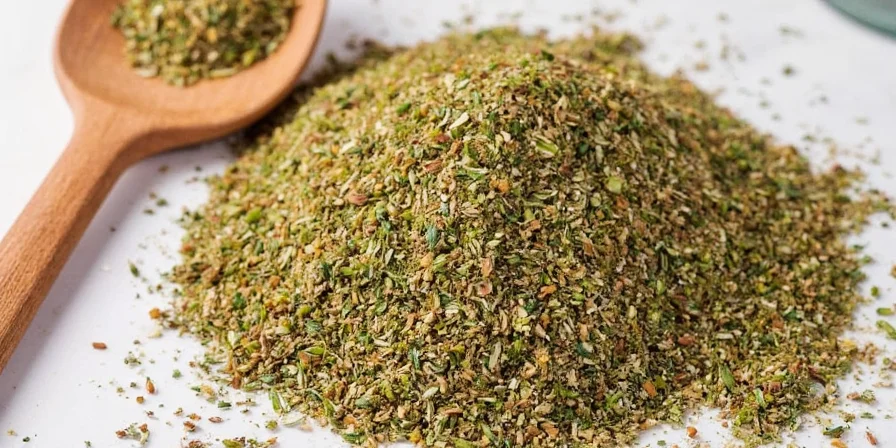7 Secrets Behind the Perfect Italian Herb Seasoning Blend (That Every Home Cook Should Know)
If you've ever wondered why your homemade spaghetti doesn’t quite taste like Nonna’s, the answer might be hiding in your spice rack. That little jar of Italian herb seasoning blend could be the missing link between ‘just okay’ and ‘mangia bene!’ So let’s dive into the fragrant world of Mediterranean herbs, uncover some pro tips, and maybe even debunk a few myths along the way.
Table of Contents
- What Exactly Is an Italian Herb Seasoning Blend?
- The Core Components of the Blend
- Pro Tips for Blending Like a Pro
- Creative Ways to Use Your Blend
- Fresh vs. Dried: The Great Herb Debate
- Customizing Your Own Signature Blend
- Storage and Shelf Life: Keep It Fresh Longer
- Common Mistakes to Avoid

What Exactly Is an Italian Herb Seasoning Blend?
An Italian herb seasoning blend is more than just a random mix of dried leaves in a shaker. It's a carefully curated combination of aromatic herbs commonly used in Italian cuisine. While recipes can vary, most blends feature a core group of Mediterranean standouts like oregano, basil, thyme, rosemary, marjoram, and sometimes parsley or sage.
The beauty of this blend lies in its versatility — it complements everything from tomato sauces and roasted vegetables to grilled meats and bread dips. But not all blends are created equal. Understanding which herbs bring what flavor profile to the party can make the difference between a decent dish and one that sings with flavor.
The Core Components of the Blend
| Herb | Flavor Profile | Best Used In |
|---|---|---|
| Oregano | Earthy, slightly bitter, bold | Pizza, tomato sauces, grilled meats |
| Basil | Sweet, peppery, aromatic | Pesto, salads, creamy pasta sauces |
| Thyme | Subtle, savory, floral | Stews, roasts, soups |
| Rosemary | Piney, resinous, strong | Roasted potatoes, lamb, focaccia |
| Marjoram | Milder than oregano, sweeter | Egg dishes, vegetable medleys, fish |
Pro Tips for Blending Like a Pro
Creating your own Italian herb seasoning blend at home is easier than you think — and infinitely more rewarding. Here are some expert-approved strategies to help you get the most out of every sprinkle:
- Balance is key: Don’t overload on one herb unless you want it to dominate. A typical ratio starts with 2 parts oregano, 1 part basil, and smaller portions of the rest.
- Grind at the end: Whole herbs retain flavor better. Grind them right before use for maximum aroma.
- Dry thoroughly: If using fresh herbs, dehydrate them completely to prevent mold and preserve potency.
- Toast lightly: Some chefs swear by toasting the herbs gently in a dry pan before grinding — it releases hidden flavors!

Creative Ways to Use Your Blend
Think beyond marinara. Your Italian herb seasoning blend can do wonders in a variety of unexpected ways:
- Popcorn dusting: Mix with coarse salt and a bit of garlic powder for a gourmet snack.
- Fries and chips: Sprinkle on oven-baked fries for a herby kick.
- Compound butter: Combine with softened butter and spread over grilled steak or corn on the cob.
- Bruschetta base: Mix into olive oil for a quick dip or drizzle over crusty bread.
Fresh vs. Dried: The Great Herb Debate
While fresh herbs offer vibrant color and fragrance, dried versions have their place — especially when it comes to storage and cooking techniques. Let’s break down the differences:
| Factor | Fresh Herbs | Dried Herbs |
|---|---|---|
| Flavor Intensity | Mild, delicate | Concentrated, robust |
| Shelf Life | Days to weeks | Months to years |
| Best For | Garnish, finishing touches | Cooking, baking, long simmering |
| Usage Ratio | Use 3x more fresh than dried | Use 1/3 amount of dried vs fresh |
Customizing Your Own Signature Blend
Why stick to tradition when you can personalize? Play around with regional influences or dietary preferences to create a signature blend:
- Cal-Mex twist: Add smoked paprika and a touch of chili flake.
- Vegan-friendly: Skip the dairy-based anti-caking agents if buying pre-made.
- Lemon lovers: Mix in lemon zest or citric acid for a citrus burst.
- Low sodium: Make your own blend without added salt for better control.

Storage and Shelf Life: Keep It Fresh Longer
Even the best Italian herb seasoning blend will fade if stored improperly. Follow these simple rules to keep those flavors intact:
- Dark glass jars: Protect against light degradation.
- Away from heat: Keep spices away from the stove or oven.
- No moisture: Ensure lids are tight-fitting and avoid shaking over steaming pots.
- Label & date: Track when you made the blend — most dried herbs last about a year.
Common Mistakes to Avoid
We’ve all been there. You open a forgotten spice jar six months later only to realize it smells more like cardboard than oregano. Avoid these rookie errors:
- Mixing wet and dry: Moisture leads to clumping and spoilage.
- Overloading: Less is often more with potent herbs like rosemary.
- Ignoring expiration dates: Even dried herbs lose potency over time.
- Not tasting as you go: Adjust your blend based on real-time feedback.

Conclusion: Spice Up Your Kitchen With Confidence
An Italian herb seasoning blend isn’t just another jar on your shelf — it’s a passport to flavor town. Whether you’re a seasoned chef or a curious cook, mastering this blend opens up a world of culinary possibilities. With a few smart choices and a pinch of creativity, you can elevate your everyday meals to something truly special. Now go forth and season with confidence!











 浙公网安备
33010002000092号
浙公网安备
33010002000092号 浙B2-20120091-4
浙B2-20120091-4